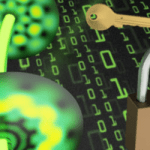Quantum Entanglement of Electrons Using Heat

(SciTechDaily) A joint group of scientists from Finland, Russia, China, and the USA have demonstrated that temperature difference can be used to entangle pairs of electrons in superconducting structures. The experimental discovery, published in Nature Communications, promises powerful applications in quantum devices, bringing us one step closer towards applications of the second quantum revolution.
The team, led by Professor Pertti Hakonen from Aalto University, has shown that the thermoelectric effect provides a new method for producing entangled electrons in a new device. “Quantum entanglement is the cornerstone of the novel quantum technologies. This concept, however, has puzzled many physicists over the years, including Albert Einstein who worried a lot about the spooky interaction at a distance that it causes,” says Prof. Hakonen.
Along with the practical implications, the work has significant fundamental importance. The experiment has shown that the process of Cooper pair splitting works as a mechanism for turning temperature difference into correlated electrical signals in superconducting structures. The developed experimental scheme may also become a platform for original quantum thermodynamical experiments.





















